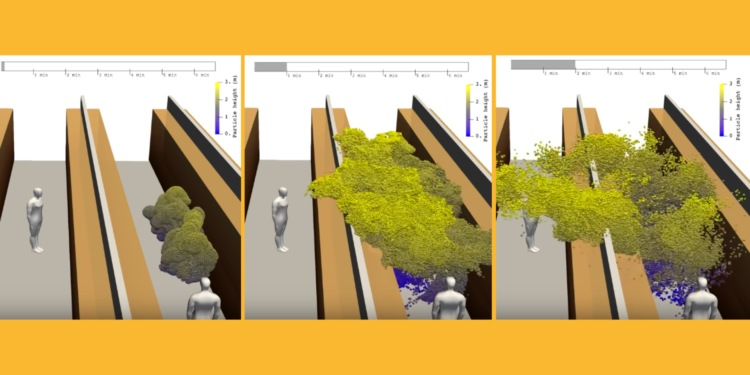The study indicates that particles can remain in the air for several minutes after coughing, promoting transmission in enclosed and crowded public spaces
The SARC-CoV-2 pandemic is changing the habits of everyone in the world. Unfortunately, until the discovery of the vaccine, our lives will be affected in many ways on a daily basis. These include the use of the mask in public. Why is this so important? How much evidence do we have of the effectiveness of the masks? A Finnish study shows for the first time how the new coronavirus can spread.
Researchers at Aalto University, Finnish Meteorological Institute, VTT Technical Research Centre of Finland and University of Helsinki simulated the spread of aerosol particles emitted after coughing. The environment in the model is an enclosed space, similar to the aisles between the shelves of a supermarket. Groups from Aalto University, VTT Technical Research Centre of Finland and Finnish Meteorological Institute conducted independent studies.
The preliminary results are the same in the three cases, which gives great value to the truthfulness of the research. The simulation shows that the cloud expelled from the mouth remains in the immediate vicinity of the sick person and disperses in the following minutes. However, the process takes several minutes. The results suggest that the expelled virus can remain in suspension in the air even after the patient has left.
The simulation and graphic processing were carried out thanks to a supercomputer of the CSC – Finnish IT Center for Science. The study allows us for the first time to “see” the virus in the air and helps us to understand the importance of respecting the rules, such as social distance and the use of masks. In addition, scientists point out that the presence of fans does not reduce the potential for infection.
The simulated particles have a diameter of less than 20 micrometers, completely comparable to those expelled with the cough (less than 15 micrometers). The particles of these dimensions do not fall on the floor but move following the air currents or remain suspended in the same space. Ventilation in enclosed spaces can therefore help the spread of the virus by means of enchant the distance it travels.
The last aspect to underline, however, concerns the bacterial load, i.e. the concentration of virus in the particles. To date, there are no certain indications of the efficiency of the contagion compared to the bacterial load, so it is not yet possible to say with certainty that the areosol caused by coughing is always contagious. Anyway, if in doubt, it is better to prevent any risk situation, in order to preserve the health of many people and try to regain the normalcy we have lost.

































